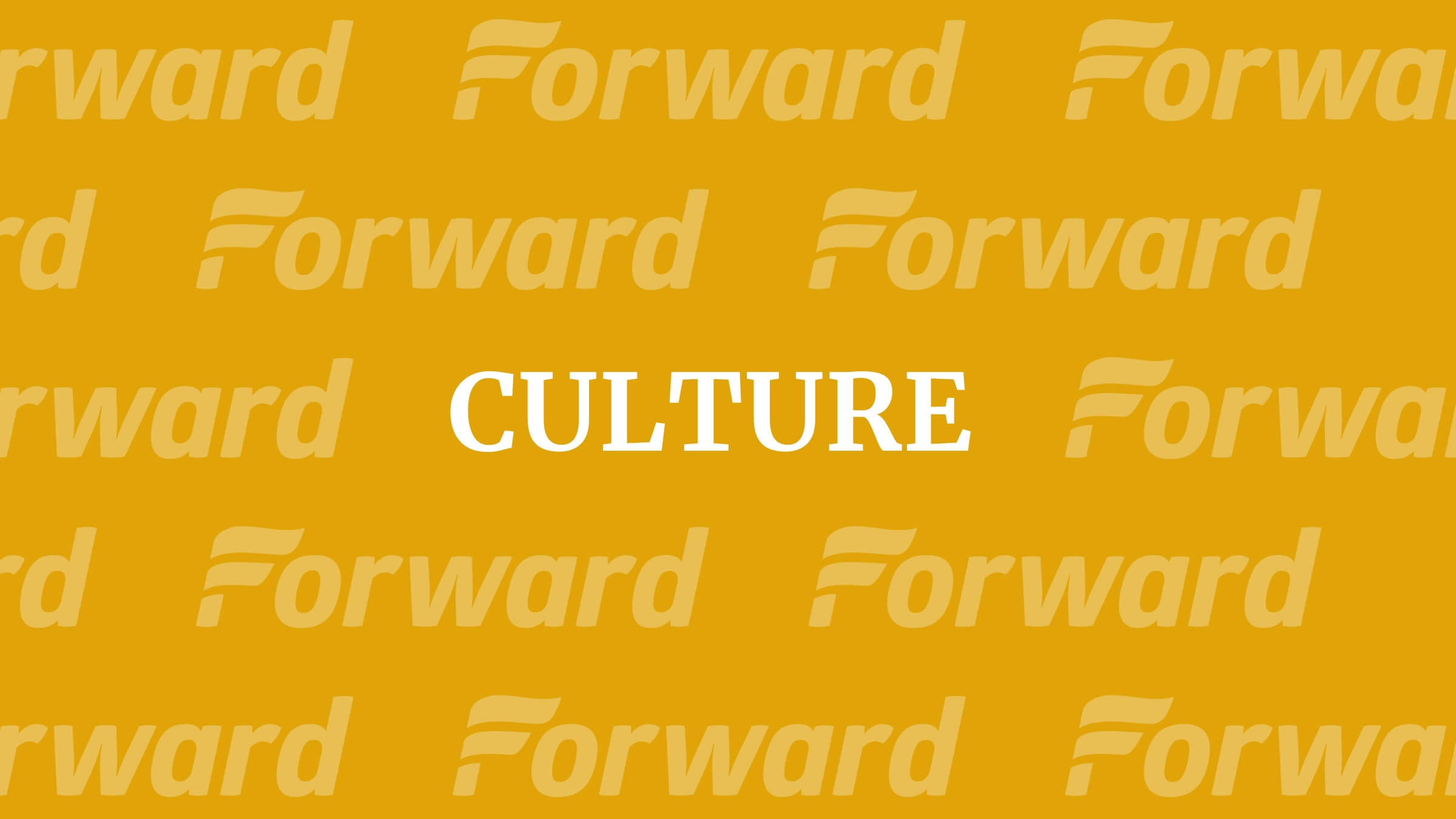‘The most riveting and raw documentary I have ever seen’
In ‘Last Flight Home,’ Ondi Timoner chronicles her ailing father’s decision to end his own life

Graphic by Angelie Zaslavsky
Editor’s note: This article contains discussion of suicide.
“Last Flight Home” is the most riveting, piercing and raw documentary I have ever sat through. A family love story that forces the viewer to confront death in all its scorching dimensions, it is profoundly difficult to watch, yet it is impossible to turn away.
In January 2021, Eli Timoner, 92, is determined to die. Suffering from COPD and congestive heart disease, he is in pain, bedridden and totally dependent on those around him. He is of sound mind and wants out. At first horrified, his family is ultimately compelled to help him. Filmmaker Ondi Timoner (“Dig” and “We Live in Public”) films her father and family on the last 15 days of his life as they shepherd him on his final journey, knowing precisely when it is going to happen and how.
The viewer is with them every step of the way, including the final moments as Timoner and her brother, David, prepare the lethal medication that will kill him. But to say that this is a film about assisted suicide is reductive. It’s about so much more.
Throughout, Eli, who in his youth owned an airline, is lying on a hospital bed in his tightly packed bungalow living room somewhere in California, one of 11 jurisdictions where “assisted suicide,” or the preferred term, “medical aid in dying,” is legal. His wife Lisa, grown children and grandchildren, who call him “Pop-Pop,” watch over him.
He’s frail and weakened, but neither bitter nor self-pitying and he shows no evidence of fear. After two doctors agree that the patient is terminally ill, mentally competent and capable of self-administering the aid-in-dying drugs, a mandated 15-day waiting period begins. There’s no shortage of evaluations and paperwork.
He is told he can change his mind at any point up until he takes the lethal dose: an anti-nausea drug, followed by a heart-slowing medication and the final deadly cocktail, which leads to cardiac arrest.

Eli does not equivocate. His death is slated for March 3, a year into the COVID pandemic. Almost everyone, including a death doula, speaks with him via video chat, save for a hospice nurse who makes personal visits and his family, who usually wear masks.
The tone of these conversations, online and in person, is mostly matter-of-fact or, more precisely, calculated to sound matter-of-fact, though at some point the pretense becomes real: Life in extremis is “the new normal.” Former colleagues reminisce with him about ancient workplace issues; friends recall tennis matches they played together; one old pal remarks they will meet in heaven, to which Eli dryly notes that he will wait for her.
Ondi Timoner reads her father the obituary she has written for him. His other daughter, Brooklyn-based Rabbi Rachel Timoner, describes what his funeral will be like. David asks him about the financial issues the family will face after his death.
We learn about the details of Eli’s life through old home movies, black-and-white photos, and TV footage. In 1972, he founded Air Florida, which offered cheap flights to New York and London. “Fly a Little Kindness” was the company’s motto.
As a businessman and philanthropist, he was brilliant and progressive. In an era of segregated unions, he integrated the airline. In 1982, when Air Florida had grown into a multimillion dollar enterprise, he appeared on “Good Morning America” with Steven Hartman to discuss his success.
Half a year later, he suffered a freak stroke that rendered him permanently paralyzed on his left side. He lost his job, and, though he was unable to find another, he strove to protect his family from the reality of their failing finances. The film credits his wife Lisa’s strong stewardship for allowing the family to survive and thrive. Over the course of the film, though, Lisa seems almost like a background player, stoic and silent. Her daughters believe she’s in denial and has has a hard time being alone with Eli. One wonders if she is feeling guilt or relief or both or something else altogether.

While the cameras are always on in “Flight,” the film is neither exploitative nor exhibitionistic. Ondi Timoner, who is both co-star and director, gently interviews her father, knowing the pitfalls and dangers of too much exposure. Her earlier, prescient documentary, “We Live in Public,” anticipated the intrusive risks of the internet age.
Timoner says that the film was conceived as a home movie, a family heirloom that would keep Eli alive forever. But as she grew increasingly committed to physician-assisted suicide, she saw how a film could powerfully plead her cause while also serving as a eulogy for her father.
The topics covered in “Flight” have been effectively addressed elsewhere. In the rugged Israeli drama “Asia,” a mother helps her ALS-afflicted daughter to die; “Farewell Party,” another Israeli narrative, is centered in a nursing home where more than a few patients hope to make a speedy exit. More recently, in Amy Bloom’s powerful memoir, “In Love: A Memoir of Love and Loss,” the author recounts the deeply unsettling saga of her late husband’s struggle with Alzheimer’s disease, their great love story, and finally their trip to Switzerland, where he is afforded the opportunity to escape his torment.
But none of these has the impact of “Last Flight Home” with its sucker-punch immediacy, intimacy and authenticity. The distance between the viewer and what’s happening on the screen is virtually nonexistent.
Among the film’s many sterling attributes is its specificity of character and relationships as it depicts the family’s mutual unconditional love. Both daughters are gay and have children with same-sex partners. They are fully embraced. No mention is even made of their nontraditional lives. At the end of each visit or phone call, all “farewells” are punctuated with the signoff, “Love ya.” Many say this, but here it feels genuine.
The most complex, contradictory relationship on display here is the one between Eli Timoner and his rabbi daughter, Rachel. It’s not clear how observant he is or, for that matter, how much he identifies as a Jew. Rachel says that early on he was troubled with her career choice, but as he’s aged and especially as he approaches his impending death, he has grown more comfortable with it.
He now views her as his rabbi, a dynamic she finds unnerving; she still sees herself as his daughter. Now she’s called upon to be both. He asks her how one experiences one’s own death? What’s dying like? She has to admit she doesn’t know. He worries that he’ll be buried when he’s still alive. She reassures him that will not happen.
She believes they’ve always had a spiritual bond, however unacknowledged. Recounting an event bordering on the miraculous, she describes how, after he had his stroke, she urged him to reach out and hold her hand. To her amazement he raised his immobilized left arm over his head, extended his hand to her outstretched hand and squeezed it. He was never able to do it again.
She encourages him to talk about experiences that continue to haunt him as an exercise in catharsis. He says he has never recovered from the humiliation of financial failure.
“I pissed away $40 million,” he says, describing how he felt forced to borrow money from friends and relatives. As much as Rachel tries to impress upon him his value as a loving human being, husband, father, friend and colleague, it’s impossible to know if he’s changed his sense of self-worth. Still, at the end, he says he feels lighter and has forgiven himself.

One lovely moment cannot go ignored. When Rabbi Rachel says she’d like to speak with Eli every night at 6:30 p.m., he balks because that’s when he watches his other Rachel, Rachel Maddow, who shortly thereafter makes a cameo appearance online, thanking Eli for his loyalty and wishing him the best. Maddow’s good-humored charm and generosity is touching.
Though no topic is censored, death is discussed only in terms of an “experience,” “adventure” or “journey.” Neither “nothingness” nor “annihilation” enters the conversation. Lisa urges Eli to move on to another life if he has the option. And Eli plays his part well too, stating he’d rather stay wherever he finds himself on the other side. His ambition for the afterlife is to watch over the family; he has no need to come back as someone or something else.
Prior to the actual event, Eli experiments with glasses and straws of various sizes to see what he can hold and maneuver to his mouth on his own. Still, there is no dress rehearsal for the last scene of his life, and the final moments are shocking and heart-wrenching. Eli has difficulty holding the cup. Ondi wraps her hands around his and, in a stunning gesture of shared responsibility and mutual love, Rachel wraps her hands around her sister’s.
Eli swallows, coughs and says that the taste in his mouth is terrible. He clutches David’s hand and then he drops it. A moment later, the hospice nurse places the stethoscope to his heart. It is no longer beating. She nods, indicating that it’s over. For the viewer and maybe the family too, it’s a release and a relief.
Almost immediately he appears shrunken and shriveled. With such tenderness the three adult children lift him up and wrap him in a sheet, covering him from head to toe. They notice the terrible bedsores on his back. He never said a word about them.
“Last Flight Home” is a story of the triumph of love over death yet, at its core, it paradoxically remains an excruciating affirmation of death’s unrelenting presence, terrifying and unknowable, for the dying and their loved ones.
















